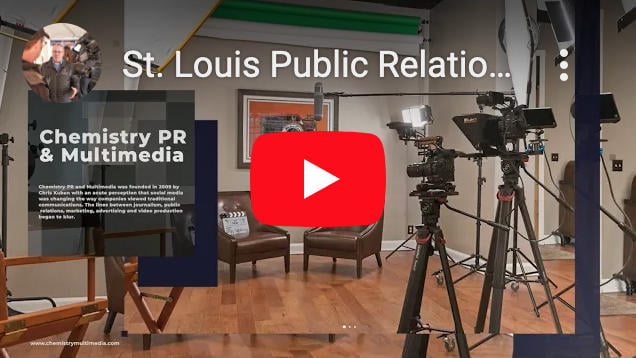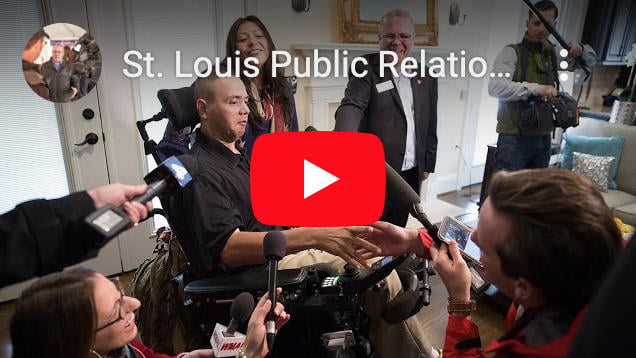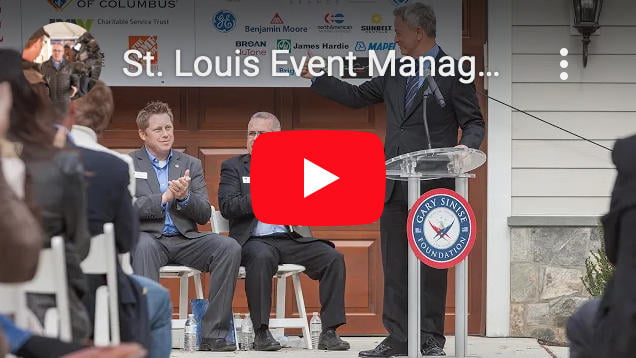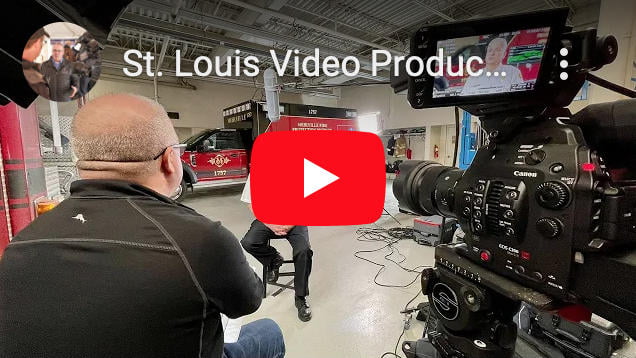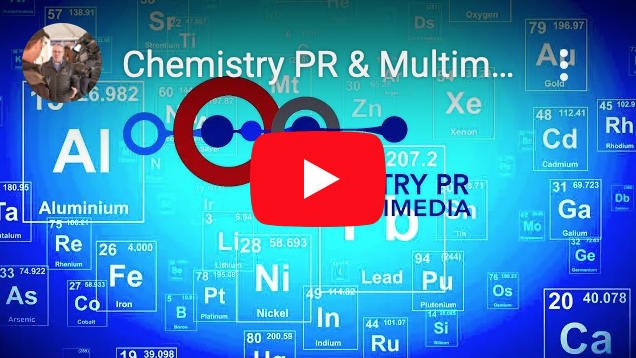Getting Your Message Heard Through Video
We are always looking for better ways to convey our messages. Personally, we want to express our thoughts, ideas and sentiments. For business, effectively communicating the value of products and services through video production can bridge the gap between mediocrity and true success.
Technology has changed the way people interact with the world around them. While there will always be a place for the printed message, video has become extremely popular and will only become more so. Google, as well as other search engines, are ranking online videos above and beyond other content. That fact should be compelling enough to convince anyone serious about getting a message out to their audience that shooting video is a skill worth learning.
With the recession of 2007-2010, most television based media outlets across the country started cutting back on staff, production value and story coverage. In many markets, my own hometown market of St. Louis, Missouri is not one of them, these television based outlets would graciously accept B-Roll from us as an outside source to help them tell our story, especially when they couldn’t send a crew. The St. Louis market wouldn’t allow this due to union rules and regulations.
In typical news production and film, B-Roll is the supplemental footage. The technique is to use many short video clips from different angles to tell a story while a voiceover generally explains the story in the video.
When high-definition DSLR’s (digital single lens reflex cameras) became affordable, I started learning how to shoot and produce video using these amazingly high quality cameras. I fell in love with the Cannon camera – now I have a couple 5D Mark III’s. I also started acquiring microphones, wireless lav mics, LED lights, field monitors, backdrops and much, much more. These are all needed items for high-quality productions. Here’s a word of advice: If you start down this road, understand it can become very expensive!
But, here’s the cool thing… video I started shooting at events in the middle of nowhere started to get picked up by local media in many different markets! If I shot video of an event, packaged it correctly and then uploaded or handed the B-Roll to a media outlet, I found that 9 times out of 10, they would use the video and just use a voice-over to explain the video components I sent to them.
To date, I have seen video from my own hand end up on FOX News, CNN, CBS, NBC and ABC nightly news. I have also had video I shot run on hundreds of stations across the country. WOW… what an awesome opportunity! If you learn how to shoot, you can provide your footage to media and they will use it. How much more incentive do you need to learn how to make this happen?
Additionally, I traveled to Afghanistan in November of 2013 and shot a lot of footage for a client documentary I was producing. When I arrived in New York I was approached by CBS Evening News within 2 hours of landing in New York. They were asking me to allow them to use my video for a national segment. Because it was for a client, I immediately said absolutely! I was there for 3 hours allowing them to download my video. I was honored. But even more, I was delighted it helped my client tell their story.
If the above reasons don’t provide you with enough incentive to start video production as part of your public relations practices, I’ve listed few additional reasons below…
Reason 1: Social Media is a Way of Life
You are using electronic platforms anyway – make the most of it! Chris Trimble quoted a white paper by Cisco Systems, Inc in July 2015, stating “By 2017, video will account for 69{fb2cd6ecc5ea822e7d55867f94952838aab4b89ae39846a722113040866900c7} of all consumer internet traffic, according to Cisco. Video-on-demand traffic alone will have almost trebled.” Nielson polls reinforced that idea with a claim that 64{fb2cd6ecc5ea822e7d55867f94952838aab4b89ae39846a722113040866900c7} of marketers expect video to dominate their strategies in the near future.
Video can speak of products and services, and the people behind them, like no other media can. People love film. From product demonstrations to instructional video, movie trailers to funny animal shots, emotions are evoked that most print and text message can’t touch.
Need more numbers? YouTube is visited more than one BILLION times every month – rivaled only by Facebook in unique visitor numbers. Anyone scrolling down a Facebook feed in recent days has encountered a number of posted videos. Besides the ability to get a multi-dimensional view of a product being considered for purchase, a video can make the human connection that marketers know is vital to business.
In today’s world, sales is more about building relationships and allowing the closed business to follow. While face to face relationship building may be the ultimate goal, video is a great place to start.
Reason 2: Mobile Access!
We are a mobile people now more than ever! Video is a great mobile marketing tool. It is easier to view in the limited space provided and is available anywhere. This makes it accessible to a wider audience. Text can be difficult to read on a mobile screen, particularly when the text is not optimized for mobile viewing. Mobile video, on the other hand, is delivered in full screen mode, making it pleasing to the eye, and it utilizes the whole viewing pane eliminating distractions. Finally, and perhaps the best argument for mobile video is this. Regardless of the location of your potential customer, more of them are using mobile devices to access the web. You have their attention where ever they are located.
Reason 3: Brand Awareness
Video offers a unique opportunity to strengthen brand awareness. It can be delivered anywhere including website, email, text messaging, social media and landing pages. Small business owners with small marketing budgets can include video shot from a mobile device as part of a regular social media strategy to build personal and professional credibility. Most video goals are to build brand awareness, connect on a personal level, and promote business. All of these strategies can be accomplished in just a couple minutes.
Reason 4: Updated Content
Content at your fingertips! As a marketer or PR representative, content is king. Readily available content is invaluable. And, learning to shoot video will drive you to always be prepared to shoot video. Developing this habit of shooting video builds a content library available for use at any time.
Learning to shoot excellent B-Roll, or secondary video, also enhances primary content and captivates your target audience when you are creating specific content for media assignments.
When I bring on new clients, I always stress the importance of building a ‘Digital Assets Library.’ This is one of the single most important things an organization can do to help media down the road tell the story of what that organization is doing. For one of my clients, I had 5 years’ worth of digital assets sorted by date, event and content. This was invaluable because we had hundreds of interviews and B-Roll from previous events. When we started creating similar events in other markets, we could pull the B-Roll from previous events to send to media and guess what? They used the B-Roll almost EVERY SINGLE TIME!
I was approached last month to speak to a Bank about handling their Branding, Media Relations, Event Management, Social Media and Paid Advertising programs. For 10 years, this Bank has held a huge community event. It was a true mega-marketing opportunity for the Bank. However, when asked if they had any video of the event to use with local media to explain the story on-air, they said no. I don’t think I have to explain how important it could be to just have a digital library to pull a minute of video from the previous years’ event to promote this years’ event. I was dumbstruck!
I should explain that there are many obstacles to overcome as you venture into shooting video! Do you have the budget to acquire quality gear? Do you have the skillset to understand the components to a good story? Do you have, or have access to the physical resources and the time to devote to the craft?
How do you overcome those obstacles?
For simple marketing strategies, start by learning to shoot video, and then develop a habit of capturing footage anytime and anywhere. For more complicated or demanding video, hire a videographer. At Chemistry Multimedia, our professionals are dedicated to your message and to your audience.
Do you know that as late as 2016, many local stations, as well as national outlets would take video shot on an iPhone? I’ve got an example for you: I was producing an event in Falbrook, California and the local NBC station couldn’t send out a crew due to other pressing news at the time. The producer really wanted to tell the story so she was pleading with me to send her any footage, even iPhone footage. Because I carry my video equipment with me at all times, I was able to do one better… I was able to get them high-resolution video of the event which they aired that night in the San Diego media market!
Get Started!
We explained why there is an incredible need to shoot video but we havn’t yet explained how to go about it. There are three impotant components to get sarted:
1) The Equipment Needed
Today, there are dozens of inexpensive, high-quality cameras available in most retail stores. DSLR’s have become the best solution for the modern publicist and/or multimedia journalist. They capture television quality video for news production. You can always learn the basics on an inexpensive camera and then upgrade.
From GoPro Cameras to a simple Canon t3i coming in at around $350, or a t5i for about $559 are some good options. Other great options are the 5D Mark III or Canon C300 Mark II Cinema EOS Camcorder ranging in price from $3k to $12K. These are all great options, well suited to yourbudget, skill level and/or desired dedication to becoming highly proficient in video production. There are many other options from Nikon, Sony, Panasonic, JVC and others.
Acquiring a great camera is just the beginning, meaning as soon as you get a camera, you’ll need mics and additional audio recording devises, LED Lighting, reflectors and much more.
When you startout as an Occasional Photographer and Hobbyist you start learning the basic skills of photography/videography. In this phase, you might invest in a camera under $1,000. These 2 levels are devoted to those learning the craft. They may or may not have taken classes on photography but aspire to become better.
As an Amateur, you start acquiring higher-end equipment; usually between $1,000-$3,000 or more. These are the artists that are devoting more time to learning the trade. They usually take on projects at a discounted rateor offer their services for free to gain experience.
After reaching the Semi-Professional level, this person will start taking paid gigs on a regular basis. In many cases the Semi-Professional level person is very creative and eager to take on projects, but may lack the business chops to take their profession to the next level. They will invest between $5,000-$10,000, or more, in their inventory of equipment. And they realize that when engaged to do larger projects they willhave to rent some equipment to insure best outcome for their clients.
Usually when someone reaches the Professional Level they are the best in the field and they get paid on the higher end of the spectrum for their work. It takes years of experience to reach this level. By now the professional will have well over $20,000 in equipmentand is continuously purchasing new equipment. 0This professional is continually pursuing education, honing skills and has a book of business based on referrals of previous business.
While I meet the listed requirements for being a professional I still don’t really consider myself at that level. Yes I have acquired and/or invested more than $20,000 in camera and audio gear (not to mention the gear I’ve rented) to better help facilitate my client’s message. I specialize in Public Relations. That said, I have actually moved into becoming more of a produer and hiring professional staff to video my clients’ projects while I oversee its’ production.
I have produced TV commercials, web marketing videos and a lot of B-Roll to help facilitate stories on local and national newscasts across the country. Video I personally shot has been seen on CNN/HLN, Fox News, CBS, NBC and ABC Evening Newscasts, and hundreds/thousands of local stations across the country. All done using DSLRs. As a Public Relations professional I highly recommend you add a DSLR to your equipment arsenal, and matery of it to your repituar of capabilities.
2) Learning How to Shoot

Chris Kuban, Owner/Managing Consultant of Chemistry Multimedia, LLC learned video production in 2011 to assist his clients.
You can attend the LA Film School, but as you transition through the stages of the self-teaching and mucking through the learning curve by getting into the field and practicing, I recommend you surf though YouTube or Vimeo videos on how to become more proficient with your camera. Many local camera stores have inexpensive weekly classes that teach technique and mechanics of framing and shooting. Above and beyond that I suggest a subscription to Lynda.com or go to your library to get access to Lynda.com for free. Also, if you’re a paid member of Linkedin, you can gain partnership access to Lynda.com. Here, you will find hunderds of professional videos on how to become a professional videographer in no time!
3) Video Editing Software
Picking the right equipment is important. Even more important may be choosing the right software to edit your videos. Understanding how long a software has been on the market and how the industry uses the software will be key to helping you find software best for you. Or, it may come down to price. In much the same way there is a hierarchy of amature to professional levels of equipment you can purchase to shoot your video, there are equaliy diverse options in software.
The Occasional Veidographer and Hobbyist may choose the free and inexpensive options iMovie, Windows Movie Maker, Microsoft Video Editor Master, Filmora, YouTube Video Editor and there are a few others. These software solutions have extremely limited capabilities.
Once you start moving into the Enthusiast and Amature Videographer level there is a host of more creative options for movie editors. To name a few, CyberLink Power Director 14, Corel VideoStuido Pro x9, Adobe Premiere Elements 14, Pinnacle Studio 19.5, Avid Video Studio, MAGIX Movie Edit Pro 2016, Sony Movie Studio 13. These are all good options, and again, your budget will dictate your best solution.
I decided to immediately jump into learning how to edit video as a Professional. If you can afford it I highly recommend choosing between Final Cut Pro X and/or Adobe’s Premiere Pro CC. Other software to consider if you are moving in this direction are Compressor and Motion. These both automate the export function and create additional options for animation. My personal favorites are Final Cut X, Compressor and Motion.
Please keep in mind that no matter what software you purchase the manufactuers will constantly issue updates and changes. This can be good or bad; depending on how intrenched you are in using the software. For example, in 2011 I purchased my first video editing iMac and Final Cut X software. At that tim, Final Cut X was just upgraded from Final Cut 7 with earthshattering changes. This significantly pissed off many of its users because the routine editing features had changed drastically! Luckilly I didn’t have any good or bad habits using Final Cut 7 so I was able to start fresh learning Final Cut X.
Critical Side Note: When producing/editing video for a client (NOT FOR USE BY THE MEDIA), you are going to want to make sure you have Royalty Free Music to futher pull in your viewer.
4) Distribution of Your Video
Depending upon your intended use of the video, the simplest and easiest way to distribute your videos is to upload them to YouTube or Vimeo. Both of these video search engines provide a wide range of options for automating the process of copying and inserting code into websites for easy viewing. Additionally, both now allow you to do a moderate amount of editing online.
We should note that there are dozens of free software options for anyone to download video content from those hosting sites mentioned here. So if you post publically, you must also understand that everyone can view and/or steal your video.
From a Public Relations perspective, I welcome any and all news orgaizations to take video from my YouTube and Vimeo sites to use in their segments. This helps news outlets in that they don’t have to send out resources to film what you have already filmed. News stations have the best software to take download posted videos online.
It should be noted that allowing media outlets to use your video helps them in another way. Whenproducing Promotional News Content a producer can just pull down previous years’ video of the same event and use that video as B-Roll.
As you can see by our thourough analysis there are many factors to consider when diving into producing video. Take it from aPublic Relations Professional; it is absolutely a necessity to learn and execute. The direct result will be added value for your clients as you allow them to use previously shot video to help explain their organization in future news segments. All I do is hand the producer a flash drive or send links to the video via email. It’s as easy as that!
You may be thinking, “What is in it for me when clients and news outlets are able to use my work?” Glad you asked! Making your work accessible to new outlets can go a long way to earning you a great reputation with those outlets, and can earn you some serious respect when your work is top notch. The networking opportunities that could help to grow your business are … well … are you seeing the big picture?





